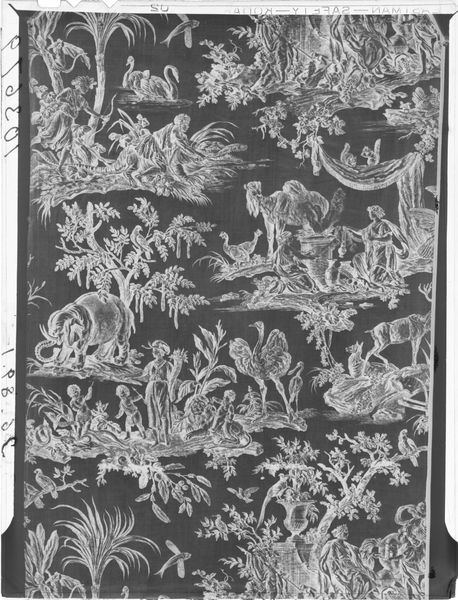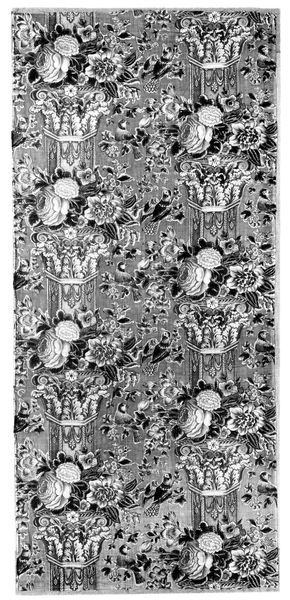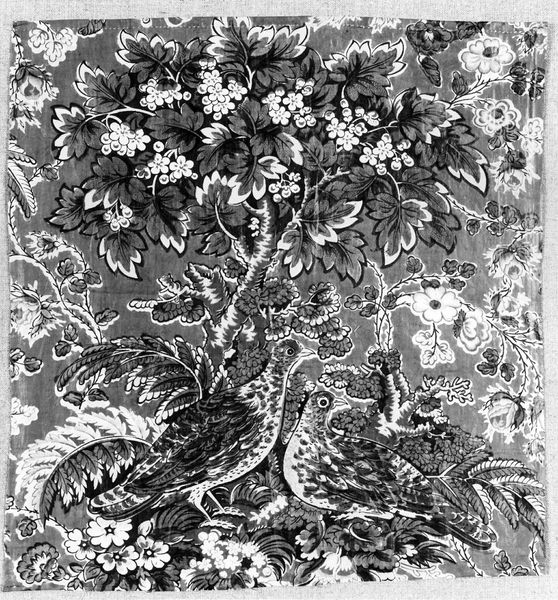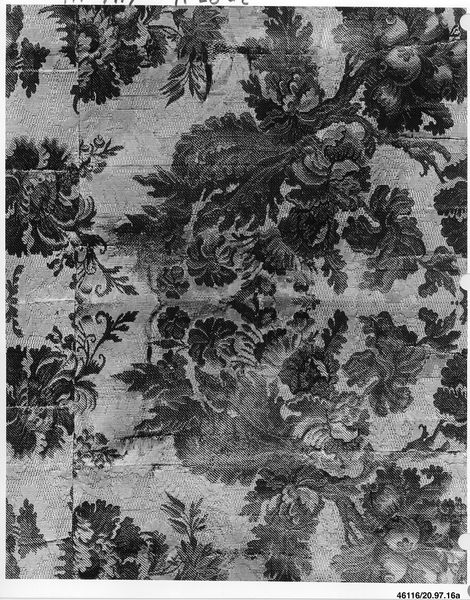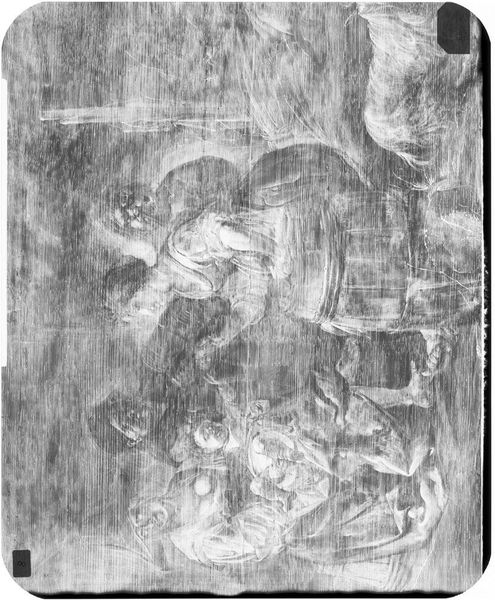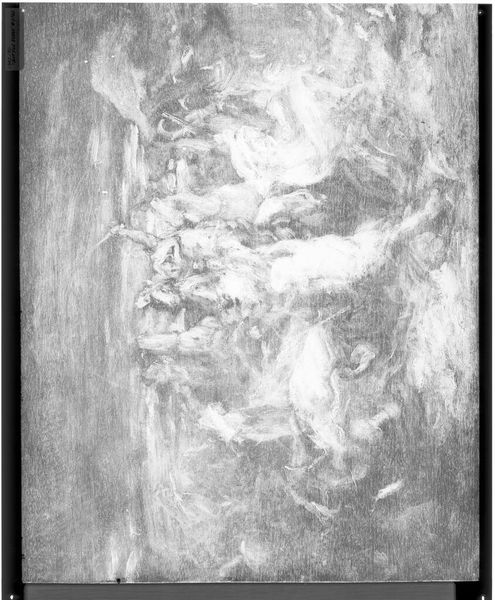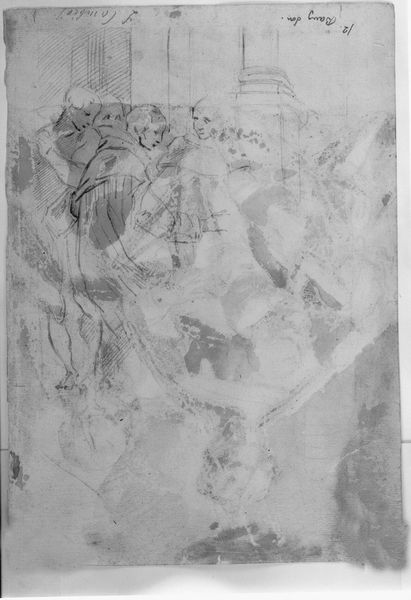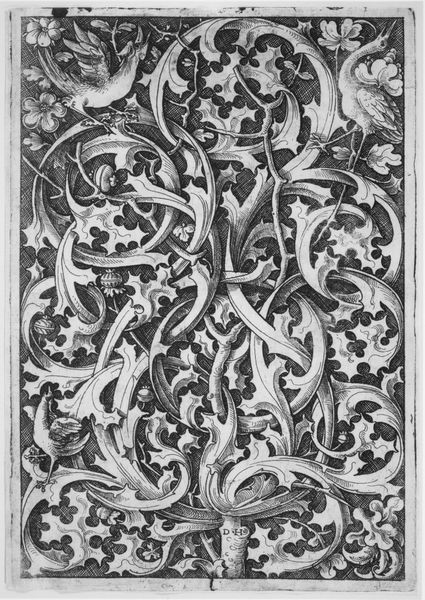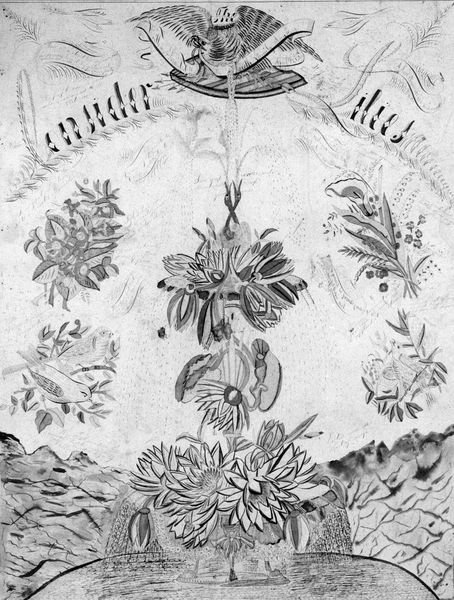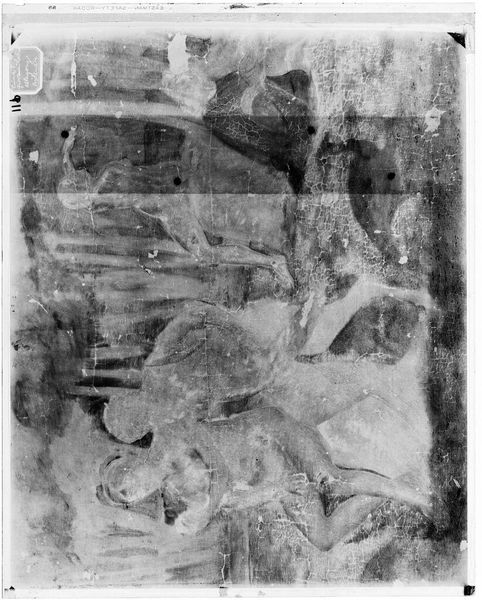
print, weaving, textile, woodcut
#
narrative-art
# print
#
weaving
#
landscape
#
textile
#
figuration
#
text
#
romanticism
#
woodcut
Dimensions: 40.6 × 47.0 cm (16 × 18 1/2 in.)
Copyright: Public Domain
Curator: Today, we’re looking at "Panel (Furnishing Fabric)", a textile piece created around 1830, attributed to Paul Gavarni. It's currently held at The Art Institute of Chicago. Editor: My immediate reaction is a kind of oppressive density. All that heavy foliage pressing in on the figures. It feels claustrophobic, almost like a visual representation of colonial entanglement. Curator: Precisely! The intricate details and meticulous layering are visually striking. Notice how Gavarni utilizes stark contrast and intricate line work characteristic of woodcut printing techniques to depict this tableau on woven fabric. Semiotically, the use of black and white adds to this work's gravitas. Editor: Yes, but let's also consider who this 'furnishing fabric' was for. Who would want to decorate their home with a scene depicting what looks like a violent incursion into nature and indigenous life? The armed men, the disturbed wildlife…it speaks to a troubling ideology of dominance. Curator: From a formal perspective, there’s a compelling dynamism in the composition. The diagonal lines created by the figures and foliage create a sense of movement and tension. The repetition of leaf motifs contributes to the artwork's inherent harmony. Editor: Harmony for whom? These so-called ‘decorative’ landscapes were never neutral. They served as constant reminders of the owners’ power and status, often built upon the exploitation of both natural resources and people in colonized territories. Is that the implicit intention here, or pure coincidence? Curator: The lack of vibrant colours undoubtedly contributes to this sentiment of severity, though it provides an overall evenness of texture. I wonder if Gavarni’s choice to render this design with high contrast black and white figures and flora invites a further appreciation of shadow, contrast, and textual balance. Editor: It does succeed as a power narrative, reflecting the 19th-century obsession with control. This object represents more than a simple furnishing; it's a reflection of the attitudes held during its production, during the era of its consumption, and the problematic ways these ideals of control have been normalized for centuries. Curator: Thank you for that insight. By analysing its structure and historical placement, the impact of “Panel (Furnishing Fabric)” offers more than surface aesthetics. Editor: Exactly. It’s a perfect example of how domestic objects can carry immense cultural and historical weight. It forces us to confront the stories our décor tells, or sometimes hides, and interrogate them for what they truly reveal about power dynamics and historical responsibility.
Comments
No comments
Be the first to comment and join the conversation on the ultimate creative platform.
